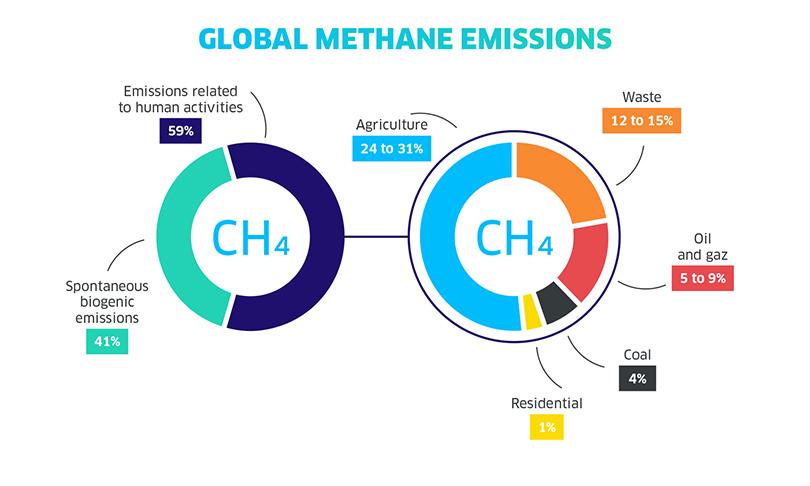
After water vapour and CO2, methane – the main component of natural gas, with chemical formula CH4 – is the third most important gas involved in greenhouse gas emissions. Though it has a relatively short lifespan in air – nine to twelve years – its environmental effects are undeniable. Experts consider that methane has 25 to 30 times (according to the calculation method used by the IPCC and even up to 85 times, depending on the calculation method) more impact on global warming than CO2!
So it is no coincidence that around a hundred countries, including the USA and EU members, have committed to reducing their methane emissions by 30% by 2030 at COP26 in Glasgow.
Emissions of human origin
Over half of current methane emissions are directly linked to human activities (anthropogenic emissions). Although agriculture and waste are the main source, accounting for 60%, a further 30% of methane emissions come from the exploitation and transport of fossil fuels (coal, oil, gas), with the proportion from gas infrastructure being very low.
According to the International Energy Agency (IEA), the oil and gas sector emitted nearly 70 Mt of methane in 2020, representing around 5% of global energy-related greenhouse gas emissions. The IEA also says that nearly 60% of these emissions come from leaks in the gas supply (of which 40% come from oil production).
